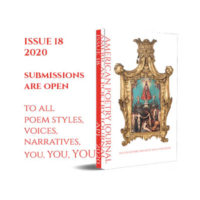
The latest issue of American Poetry Journal features work by Terrance Hayes, Philip Metres, Adriana E. Ramírez, Jenn Givhan, Trace DePass, John Sibley Williams, Cassidy McFadzean, Darby Lyons, and more.
At the NewPages Blog readers and writers can catch up with their favorite literary and alternative magazines, independent and university presses, creative writing programs, and writing and literary events. Find new books, new issue announcements, contest winners, and so much more!

The latest issue of American Poetry Journal features work by Terrance Hayes, Philip Metres, Adriana E. Ramírez, Jenn Givhan, Trace DePass, John Sibley Williams, Cassidy McFadzean, Darby Lyons, and more.
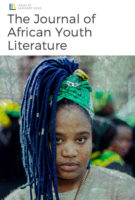 Journal of African Youth Literature issue 2 call for submissions of creative writing and artworks open now. Poetry, fiction, visual stories, plays, essays. Artworks of all kinds, including front cover. Criteria: Must be created by, about and/or for African youths (15-35 years). ‘African’ definition is, generally, born-in-Africa and of African heritage. Includes the diaspora, and not related to race or colour. Our mission is ‘Preserving African Youth Identities’ through creative expression. Visit africanyouthliterature.art.blog for more info. Email [email protected]. See issue 1 at bit.ly/2SxiOI8.
Journal of African Youth Literature issue 2 call for submissions of creative writing and artworks open now. Poetry, fiction, visual stories, plays, essays. Artworks of all kinds, including front cover. Criteria: Must be created by, about and/or for African youths (15-35 years). ‘African’ definition is, generally, born-in-Africa and of African heritage. Includes the diaspora, and not related to race or colour. Our mission is ‘Preserving African Youth Identities’ through creative expression. Visit africanyouthliterature.art.blog for more info. Email [email protected]. See issue 1 at bit.ly/2SxiOI8.
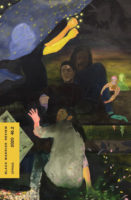 There is no shortage of creativity in the Spring 2020 issue of Black Warrior Review. Paging through the issue, readers eyes are drawn to the variety of forms and use of images within the pages.
There is no shortage of creativity in the Spring 2020 issue of Black Warrior Review. Paging through the issue, readers eyes are drawn to the variety of forms and use of images within the pages.
Amy Lee Scott’s “Field Guide to a Common Pregnancy: Notes on Loss and Growth” include field drawings by the author. Each section is introduced to a drawing of a different plant or fruit.
In “the magpie poem,” Jasmine Khaliq’s words come in small spurts across the poem’s seven pages.
“Composite Material // Spirit Willin” by Cherise Morris includes images—snapshots, Instagram posts, slideshow images from news articles, a photo of a framed photo. It’s so visually compelling, it’s difficult to skip by it.
This issue’s featured chapbook—Translator of Soliloquies: Fugues in the Key of Dissociation by Seo-Young Chu is also creatively formatted, each section broken up by a heading, a nice treat at the end of the issue.
If you want to take in some writing that’s out of the box alongside traditional forms, this refreshing issue of Black Warrior Review is a good place to start.
With the weather warming up, I see new green sprouting in my backyard daily. This seems like a good time to focus on poems about flowers found in the Spring 2020 issue of Colorado Review.
In “Bloom,” Emily Van Kley’s speaker talks to the forsythia plant “beside the house.” Together, they move through the seasons: gray in winter, blooming in summer just for the blooms to quickly disappear into leaves. Van Kley’s images are beautiful and strong with lines that really pulled at me, like “The sadness that carries / my thoughts close to its chest / will unpack it’s summer / wardrobe,” and “Soon the last rains // will poor themselves down / storm sewers’ gullets.”
Leah Tieger also writes of flowers in “Five Sunflowers,” which are a gift from “the man who loves me.” The flowers “turn the room from real / to magazine, so picture my life perpetually happy.” The flowers urge the speaker to be grateful, “if not for your presence, / at least for the hands that brought you.” The piece feels warm and loving, the same “brilliant / and saturated” yellow of the flowers.
Welcome in spring and some much needed color with these poems from Colorado Review.
Magazine Review by Katy Haas
A big fan of graphic novels (and nonfiction and poetry), I’m always thrilled when a literary magazine releases an issue featuring graphic work. World Literature Today’s Spring 2020 issue features a selection of graphic nonfiction by seven artists.
Each piece brings something different to the table. The art styles are all vastly different and each focuses on something unique: politics, history, art, ego, love.
My favorite of these is “Shadow Portrait” by Rachel Ang. Ang’s art is calming and enjoyable to look at, muted tones splayed across the page. She writes of love and ego, the ways in which we see ourselves in art, in stories, in the people we love.
On the opposite end of the spectrum is an excerpt from Guantanamo Voices: True Accounts from the World’s Most Notorious Prison by Sarah Mirk, illustrated by Omar Khouri. Unlike Ang’s calming tones, this excerpt uses bold lines and an orange color scheme which ramps up the feeling of anxiety the story produces. I’m a little disappointed at the length of the excerpt—the four pages we’re given leave on a cliffhanger that left me wanting more, though I suppose that just highlights the writer’s and artist’s skill.
This selection of graphic nonfiction has a little bit of something for everyone, and each artist/writer utilizes their craft impressively. This issue of World Literature Today is a real treat to read.
Adam Grant’s Originals: How Non-Conformists Move the World gave me a powerful new outlook on not only my abilities, but my untapped potential. Grant explains how big thinkers are not just the ones with big ideas, but the ones that take action. Reading this has not only changed the way I think, but the way I act. This book has helped me challenge the norm and foster innovative ideas, as well as getting others to believe in those ideas too.
Surprisingly, risk taking can make your career less fragile. Grant dives into the art of taking risks and challenging the status quo, giving a conclusive guide on transparently communicating and ensuring trust from others along the way. He busts the myths that hold us back from success and goes deep into the paradox: the ones who suffer most within a system are the least likely to challenge it. You can have talent and work ethic, but you have to be original for your ideas to win. How do we create original ideas? Grant shares his secrets on how to defeat perfectionism and produce a large volume of ideas to not only be seen by others, but also utilized for the better.
Originals is a five-star read, giving readers a sturdy foundation for how to embrace change and achieve success in a multitude entirely divergent atmospheres.
Originals: How Non-Conformists Move the World by Adam Grant. Penguin Random House, February 2017.
Reviewer bio: Alicia Wilcox’s work has most recently been published in The Health Journal, The Dewdrop Weekly and is sold in stores across Manhattan.
Buy this book through our affiliate Bookshop.org.
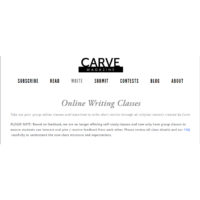 Besides being both an online and print literary magazine, Carve also offers online writing classes and online workshops. Did you know that?
Besides being both an online and print literary magazine, Carve also offers online writing classes and online workshops. Did you know that?
They currently offer two writing classes on the Wet Ink platform: Short Story Writing: Fundamentals and Short Story Writing Techniques. Theses classes both run five weeks and are held multiple times during the year.
Fundamentals consists of five lessons: Character & Plot, Point of View, Dialogue, Inner Monologue, and Description.
Techniques consists of five lessons: Use of Senses, Imagery, Metaphors & Similes, Rhythm & Pacing, and Threading.
Their Online Writing Workshop is devoted to editing for short stories or essays. This is a 10-week course where you get one-on-one attention from a Carve editor. Their next workshops start on June 1 and September 14.
Recently I moved into a new apartment building for people age 55-plus: the generations that grew up with books, not digitalia. Their schooling emphasized reading, which means the building’s shared library is a serendipitous treasure trove.
Why is it that a book you find by chance is often more pleasurable than an equally worthy book you specially ordered? Some delightful chance findings: Continue reading “Lock-Down Pleasures in Recent Reading”
Guest Post by Lily Anna Erb
Carmen Maria Machado creates a dark, dreamlike landscape in her experimental memoir, In The Dream House. Her story of queer domestic abuse, written as a collection of short vignettes, begins as a fairy tale. There’s a monster lurking somewhere, and the desire to sniff out the boogeyman makes you forget you’re even turning pages. Machado’s addition of fairy tale citations adds a semi-lighthearted and humorous touch to an otherwise darker narrative. Machado’s fairy tale monster takes the form of the woman who lives in the “dream house.”
Machado creates a fascinating practice in self-analysis and reader involvement by using all three modes of perspective. She utilizes third person to explain an airy concept, second person to tell the lurid contents of her tale, and first person to speak directly to the reader. The most frequently utilized perspective is the second person, where Machado seems to rip her hand through the spine of the book to touch the reader. Perhaps the most nerve-wracking example of this technique is the section titled “Dream House as Choose Your Own Adventure” where the reader is given multiple choices of action which all lead to the same abusive conclusion.
No matter how fascinating a world Machado can craft, it doesn’t save her from unnecessary pedanticism. The form of the book, utilizing “The Dream House as . . .” before every vignette quickly loses its original charm. The book seems to drag on unnecessarily long. Once the story loses its driving force of conflict, the reader is ready for it to end. However, these small annoyances did not totally hinder my consumption of Machado’s work. In The Dream House is full of minefields that you don’t expect. By the end of the book, the reader cheers on Machado as she recovers from her time in the “dream house.”
In The Dream House by Carmen Maria Machado. Graywolf Press, November 2019.
Reviewer bio: Originally from New York, Lily Anna Erb is a sophomore studying poetry at Eckerd College in St. Petersburg, Florida.
Buy this book through our affiliate Bookshop.org.
 Online literary magazine Memoir Magazine has extended the deadline for its first-ever book contest to April 30. The Memoir Prize is dedicated to memoirs and creative nonfiction of book-length works of exceptional merit. They have three categories: published, self-published, and unpublished. The grand prize winner receives $2,000. The fee to enter is $95. Results to be announced in June.
Online literary magazine Memoir Magazine has extended the deadline for its first-ever book contest to April 30. The Memoir Prize is dedicated to memoirs and creative nonfiction of book-length works of exceptional merit. They have three categories: published, self-published, and unpublished. The grand prize winner receives $2,000. The fee to enter is $95. Results to be announced in June.
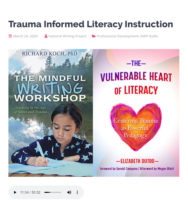 The National Writers Project Radio recently posted a podcast version of their interview and discussion with Richard Koch and Elizabeth Dutro who have both recently authored books in regards to teaching in an age of stress and trauma. The interview was conducted on February 18, 2020.
The National Writers Project Radio recently posted a podcast version of their interview and discussion with Richard Koch and Elizabeth Dutro who have both recently authored books in regards to teaching in an age of stress and trauma. The interview was conducted on February 18, 2020.
Richard Koch, now retired, is a former English professor from the University of Iowa and Adrian College (my alma mater), and is the author of The Mindful Writing Workshop: Teaching in the Age of Stress and Trauma. Elizabeth Dutro is a professor and chair of Literacy Studies at the University of Colorado at Boulder and author of The Vulnerable Heart of Literacy: Centering Trauma as Powerful Pedagogy.
” . . . the space we’re in with all these proliferated programs around trauma and that they can be one more way that certain children are marginalized in school, seen as damaged rather than full of knowledge that should count in schools . . .”
NWP Radio is also offering a free download of The Mindful Writing Workshop on their site. Do check out the full discussion. It’s an interesting conversation on education, children, and teaching and definitely worth a listen to in these stressful times.
Retiring in mid-February, I foresaw a sedentary future. However, this virus has taken even that to unexpected heights. With my time in isolation (so to speak; I have a family), I’ve been able to read Moses, a fictional narrative based on the biblical figure’s life by Anthony Burgess.
While most know Burgess for Clockwork Orange, that’s hardly his best. He is the primary reason I pursued an MFA after a 15-year absence from school.
Now I recall why I love (and envy) his writing so much. Moses is a bit closer to two of his earlier works: Napoleon Symphony, where he presents his interpretation of the diminutive conqueror’s life while dividing the book into four sections attempting to replicate the pacing of Beethoven’s Third Symphony, and Man of Nazareth, a look at the life of Jesus as narrated by a Greek merchant returning from business in Jerusalem at the time of the crucifixion.
Moses strikes out on its own in several ways, beginning with its structure. A narrative in verse. it reminds the reader of the Greek epic poems. It humanizes its characters—even Ramses. Moses himself suffers from a speech impediment. This is not unexpected for readers familiar with Burgess; most of his characters with outward defects tend to be the only complete person: recall the grotesque minister defending Alex in Clockwork Orange or the narrator’s disfigured sister in Earthly Powers.
But, like all things coming from Burgess, there are lessons to derive from this one. Issues such as free will, individual responsibility, and respect for simply stated (not grandiose and intricate) law are chief among those. This may be one of the easiest books from Burgess to read although I’d still recommend having a dictionary handy since the linguistic “tricks” found in his diction are always entertaining.
Moses: a narrative by Anthony Burgess. Dempsey & Squires, 1976.
Reviewer bio: Bill Cushing writes and facilitates a writing group for 9 Bridges. His poetry collection, A Former Life, was released last year by Finishing Line Press.
Sheltering in place has provided the perfect opportunity to dive into Edoardo Albinati’s The Catholic School, a thorough exploration of the author’s coming of age in a particular Roman neighborhood in the 1970s. More than simple description or reminiscence, the book is propelled by a comprehensive search for explanations—specifically, regarding a gruesome crime committed by a few of the quarter’s well-heeled young inhabitants. The story is itself an unsparing quest to understand the conditions and sentiments and reigning assumptions that made such a thing even conceivable.
This is no straightforward mystery or crime novel, and indeed, readers not fond of philosophical or sociocultural speculation will probably not enjoy what for this reader amounts to delicious intellectual revelry. But if the lengthy and incisive discourses on bourgeois morality and hypocrisy, the nature of violence, the troubling and troubled realities of masculinity, the strange arena that is the family, or religion and politics in Italy, aren’t your bag, all is not lost! The 1200-plus-page behemoth can most certainly be incorporated into that weight-training routine you have time to take up now that we’re all stuck inside.
The Catholic School by Edoardo Albinati. Macmillan, August 2019.
Reviewer bio: Katy Scrogin’s most recent online work is featured at The Book Smuggler’s Den and The Bookends Review. She can also be found at katyscrogin.wordpress.com.
Buy this book through our affiliate Bookshop.org.
Due to the necessity of social distancing in this time, Alaska Quarterly Review will no longer be able to review hard copy submissions to the journal. But don’t fear, they are still accepting online submissions through Submittable. Poetry submissions are being accepted through April 16 and nonfiction submissions will be open from April 17 to 30. They do charge a $3 fee.
Also, don’t forget to pick up a copy of their Spring 2020 issue which includes a special feature “Carrying the Fire: Celebrating Indigenous Voices of Canada.”
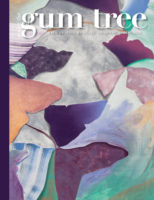
Under the Gum Tree is an electronic literary magazine and they are currently celebrating nine years in 2020. They are partnering with Stories on Stage Davis for their Northern California Writers Creative Nonfiction Contest. There is no fee to submit. Winners will be featured at Stories on Stage Davis on October 10, have their stories published in the 9th anniversary issue of Under the Gum Tree, and receive a $100 cash prize.
The contest is open until June 30 at 11:59 PM Pacific Daylight Time. Entries cannot have been previously published.
Don’t forget to check out their Spring 2020 issue featuring Kathy Stearman, Laura Halferty, Kirsten Ismene Schilling, Catherine Jagoe, Marilyn Martin, and Janine DeBaise. They offer both print and digital subscriptions.
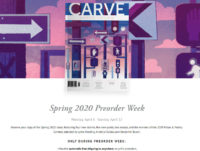 That’s right! This week is the week you can preorder Carve Magazine‘s Spring 2020 issue. From now until April 12, you can reserve your copy of the special print edition and receive automatic free shipping to anywhere on print preorders. You also get 15% off a 1-year print or digital subscription. Need more reasons to preorder this issue? It features four new stories, five new poets, two essays and the winners of the 2019 Prose & Poetry Contest selected by Lydia Kiesling, Analicia Sotelo, and Benjamin Busch.
That’s right! This week is the week you can preorder Carve Magazine‘s Spring 2020 issue. From now until April 12, you can reserve your copy of the special print edition and receive automatic free shipping to anywhere on print preorders. You also get 15% off a 1-year print or digital subscription. Need more reasons to preorder this issue? It features four new stories, five new poets, two essays and the winners of the 2019 Prose & Poetry Contest selected by Lydia Kiesling, Analicia Sotelo, and Benjamin Busch.
In Page Hill Starzinger’s Vortex Street, the poet explores many different kinds of loss, to resist squandering what is given. In her revisions of complicated grief, she takes up the subjects of unborn children, the ending of fertility, and becoming an orphaned adult after the death of parents. The fleeting life cycle of a mayfly which only endures for 24 hours is held against the cognitive decline of an aging father. In this act of ongoing “rentrayage” or remaking, the poet turns towards locating the quiet harbor where grief can be held—through the senescent body, its memories, and the exterior dwelling places that anchor us to the past.
Vortex Street by Page Hill Starzinger. Barrow Street Press, May 2020.
Reviewer bio: Shin Yu Pai is the author of AUX ARCS, Adamantine, Sightings, and Equivalence. In March 2020, Entre Rios Books published Ensō, a 20-year survey of her work across disciplines. For more info, visit www.shinyupai.com.
Guest Post by Eliza Mimski
When I go through troubling times, I often reread certain chapters in Charlotte Brontë’s Jane Eyre. It’s the part starting in Chapter 27 where Jane knows that she can’t morally stay at Thornfield Hall any longer and that in order to be true to herself she must leave Mr. Rochester. On her sad voyage away from him, she loses her money and is homeless and starving and yet her connection to nature and to her God is at its strongest. She carries on, not knowing that she will soon happen upon her long-lost relatives and will later reconnect with Mr. Rochester.
What Jane, or Charlotte Brontë, does for me here is to remind me that when I’m in the middle of a crisis I need to remember to connect to my spirituality in a big way, and also to remember that no matter how bad the situation seems, the future can bring change and that I won’t stay stuck forever. To place this in the present situation, it is necessary for me to remember that the suffering brought about by the pandemic will end.
Jane Eyre by Charlotte Brontë. October 1847.
Reviewer bio: I live in San Francisco, California, and am doing my best, like the rest of you, to stay healthy during the pandemic. Find my website here.
The University of Notre Dame is accepting submissions to its Sandeen Prize for Poetry through April 30. This is open to poets who have published at least one full-length collection. $15 administrative fee. First place receives $1,000 and publication by the University of Notre Dame Press. Learn more…

The latest issue of Poetry features work by Michael Hofmann, Martha Sprackland, Harmony Holiday, Pascale Petit, Jeannine Hall Gailey, Gertrude Stein & Bianca Stone, Tishani Doshi, Madeline Gins, Joy Ladin, Emily Jungmin Yoon,Sumita Chakraborty, Katie Pyontek, Sun Yung Shin, Torrin A. Greathouse, Sally Wen Mao, Lucy Ives, Shane Neilson, Nelly Sachs, Ocean Vuong, and more. Plus, an essay by Joy Ladin.
In C.J. Sansom’s seventh addition to the marvellous Shardlake series, we find ourselves in 1549 and once more at the whims of the Lady Elizabeth, a self-possessed and impassioned fifteen-year-old with little hint of teenage naivety. A missing woman reappears and is then savagely murdered. Her estranged husband, a distantly related Boleyn, stands accused of the crime. Matthew Shardlake is sent to Norfolk to investigate and uncovers intrigue at the highest echelons of elite society. While there, he is captured and caught up in a Kett’s Rebellion, a revolt of the peasant classes against greedy land grabs of the local gentry.
Born with a curvature of the spine and an astute and clear-sighted intellect, Matthew navigates the unsanitary conditions and unjust realities of 16th century England in the years after Henry VIII’s demise, leaving an eleven year old boy on the throne and in the midst of a lion’s den of power players. He is a man of his time but the disability which has marks him as an outsider has also engendered an empathetic awareness of the plight of others. His own critical reckoning and that of those around him, crosses the centuries, offering more relevance to modern thinking while remaining plausibly within the realms of 16th century reality and experience.
The intimacy of Matthew’s asides along with the minutiae of his daily tasks enhances the sense we are shadowing this man through each hour of his life, adding to the immersive experience of the reader into his medieval reality. And what an existence it is: political intrigue, civic unrest, religious discord, intensely unequal economic disparity, ruptured innocence, and war crimes. Add to that Matthew’s own reluctant investigations into gruesome murders, the duplicitous doings of the social elite, and the undue suffering of the poor and powerless and we have a meticulously researched novel of such scope and depth that, by god’s wounds, it is often hard to pull oneself back from it into modern life.
Tombland by C.J. Sansom. Pan MacMillan, October 2018.
Buy this book through our affiliate Bookshop.org.
Formerly known as Red Savina Review, The Red Wheelbarrow Review is set to to debut its first issue under the new name this month. Don’t forget that they are still on the hunt for poetry, short fiction, and creative nonfiction where “word meets spirit in a commingling of the sacred and mundane.” Submissions accepted on a rolling basis. $3 fee. They also offer an expedited response option. Learn more…
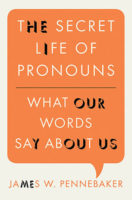 Guest Post by Colleen M. Farrelly
Guest Post by Colleen M. Farrelly
As a lifelong logophile, I’ve found folks who are acerbic, insipid, and (occasionally) inimitable. However, I’d never thought about the his or hers or theirs aspect of life (or the importance of these words) until reading James Pennebaker’s The Secret Life of Pronouns.
By analyzing the words that knit together what I’d assumed were the important words of a sentence, one can learn a lot about the sentence’s writer or speaker—his/her personality, truthfulness, social status, and even future behavior. Pennebaker even includes links to writing activities used to analyze traits described in the book. According to the bottle project, I’m likely to attend art shows and avoid blow-drying my hair (guilty on both counts).
With a fairly low reading level required for the activities sections and insight from disparate fields like psychology, politics, and law, this book offers something for everyone in the family. Happy reading!
The Secret Life of Pronouns by James Pennebaker. Bloomsbury Press, August 2011.
Reviewer bio: Colleen M. Farrelly is a freelance writer in Palmetto Bay, FL, whose poetry has appeared in many haibun and haiku journals.
Buy this book through our affiliate Bookshop.org.
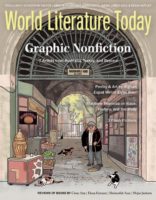
A special section devoted to Graphic Nonfiction, showcasing seven writers and artists from around the globe, headlines the Spring 2020 issue of World Literature Today. The issue also presents interviews with translators Antonia Lloyd-Jones and Isabel Fargo Cole; new fiction from Italy, France, and the Philippines; essays on Nigerian fiction and the “humanity on display” in museum exhibitions; poetry by Elyas Alavi (Afghanistan), Khaled Mattawa (Libya/US), and Mohamad Nassereddine (Lebanon); and Poupeh Missaghi’s recommended booklist about cities. More than forty book reviews also round out the issue, giving readers a wealth of titles to inspire their spring reading adventures.
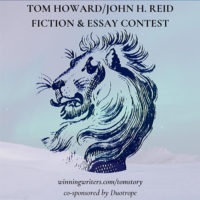 April 30 is the deadline to submit short stories and essays of up to 6,000 words to Winning Writers. Entries to the Tom Howard/John H. Reid Fiction & Essay contest can be previously published. $20 fee; two top awards of $3,000 given. This year’s judge is Dennis Norris II assisted by Lauren Singer Ledoux. The contest is co-sponsored by Duotrope. Learn more…
April 30 is the deadline to submit short stories and essays of up to 6,000 words to Winning Writers. Entries to the Tom Howard/John H. Reid Fiction & Essay contest can be previously published. $20 fee; two top awards of $3,000 given. This year’s judge is Dennis Norris II assisted by Lauren Singer Ledoux. The contest is co-sponsored by Duotrope. Learn more…
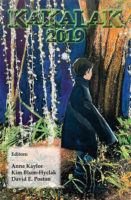 Deadline: May 18, 2020
Deadline: May 18, 2020
SUBMISSION GUIDELINES apply to both poetry and art. Anyone can enter. Goal: We’re looking for work that evokes the SPIRIT of the Carolinas from the Outer Banks and Low Country to the Piedmont and Appalachia. Submission Period: March 1—May 18, 2020. Entry fee: $12 for 1-3 poems or 1-3 images. All entries considered for publication. All contributors will receive one copy for each item selected for publication. Prize money ranges from $300 to $20. Details can be found on the Kakalak contest page of the www.MainStreetRag.com website.
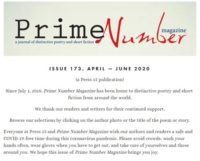
The latest issue of Prime Number Magazine includes the winners of the Flash Fiction Contest: Alan Sincic, Danielle Gillespie, and Christopher Notarnicola; winners of the monthly 53-word Story Contest: Scott B. Shepherd, Elizabeth Barton, and Eric Waddon; poetry by alyssa hanna, Forrest Rapier, Jeff Schiff, and Terin Weinberg; and fiction by Alyssa Asquith, Lisa Cupolo, and Richard Farrell.
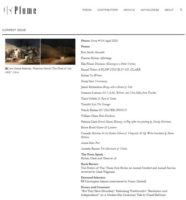
The April issue of Plume is out. This month’s featured selection: Christopher Salerno interviewed by Nancy Mitchell, with work by the poet included. Chad DeNiord in the essay & comment section. Mark Wagenaar reviews three new books on armed conflict and armed service.
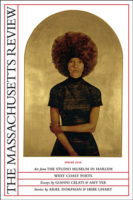
The Spring 2020 issue includes poetry by Desirée Alvarez, Danusha Laméris, Julie Murphy, Nancy Miller Gomez, Charlie Peck, Cynthia White, Keith Leonard, Augusta Funk, and more; fiction by Sylvia Hanitra Andriamampianina, Karin Cecile Davidson, Tad Bartlett, Gabriella Kuruvilla, Hebe Uhart, Jung Young Moon, and others; and nonfiction by Gianni Celati, Lesley Wheeler, Amy Yee, and Melanie McCabe.
Deadline: June 1, 2020
Gold Man Review, a West Coast Journal, is currently looking for submissions in poetry, fiction, and nonfiction for Issue 10. We are open to all topics and themes and love writing that pushes boundaries. If your work is on the unusual side, then we’re probably the journal for you. If you’re interested in submitting to Gold Man Review, please see our website for full submission guidelines. Please also note that we only accept submissions from writers in Oregon, Alaska, Hawaii, California, and Washington. www.goldmanpublishing.com
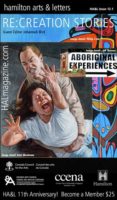
HA&L‘s Indigenous led issue with Guest Editor Johannah Bird is out. Contributors include: Kaitlin Debicki, Wenda Debicki, Sara General, Kent Monkman, Jenny Ferguson, Alyssa General, Terri Monture, Janet Rogers, Philip Cote, Taif Zuhair and more.
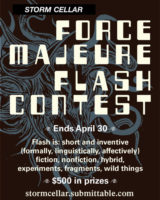 That’s right, writers of flash fiction! Storm Cellar‘s annual FORCE MAJEURE Flash Contest closes to entries on April 30. $5 fee for one story or $12 for three. Pieces must be under 1,000 words and can be a combination of nonfiction, fiction, marks, or images. First place winner receives $300 and publication. Learn more…
That’s right, writers of flash fiction! Storm Cellar‘s annual FORCE MAJEURE Flash Contest closes to entries on April 30. $5 fee for one story or $12 for three. Pieces must be under 1,000 words and can be a combination of nonfiction, fiction, marks, or images. First place winner receives $300 and publication. Learn more…
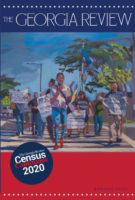
The Georgia Review‘s Spring 2020 issue presents authors’ and artists’ explorations of what it means to attempt representation of the diverse communities that comprise the United States. Special features include “Un-Redacted: A Census of Native Land,” a collection of writings by Native authors on the legacy of settler colonialism in the U.S.; a section on the internment of people of Japanese descent in North America during WWII; and dispatches from an innovative research project on prison labor in the post–Civil War “New South.” Art by Eddie Arroyo.
Don’t forget that literary magazine Transference officially closes to translations of poetry from (or inspired by) works originally written in Arabic, Chinese, Japanese, French, German, Latin, and Classical Greek on April 30. Submissions must be accompanied by commentary. They especially would like poetry on the themes of vision/seeing. They also would love to see essays on the translation of poetry. scholarworks.wmich.edu/transference/. Transference is peer-edited in a blind submission process. Published by the Department of World Languages and Literatures at Western Michigan University. Write to the editors at [email protected].
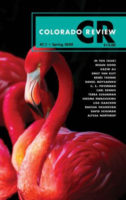
Featured in this issue of Colorado Review, find poetry by Jack Ridl, Amanda Gunn, and Yerra Sugarman; fiction by Alyssa Northrop; and nonfiction by David Schuman. Plus Raksha Vasudevan, Emily Van Kley, Leah Tieger, Gay Baines, Michael Homolka, Kazim Ali, Franco Paz, Laura Kolbe, Angie Macri, Benjamin Seanor, and many more. See other contributors at the Colorado Review website.
Each month, the editors will select one short-short story (under 1,000 words). The winning story will grace the front page of the website for the entire month and will be listed on the Stories of the Month Page, as well as the Fiction Page. The reading fee will be $10, and the winner will receive $50. Submit here: fictionsoutheast.submittable.com/submit/163713/story-of-the-month.
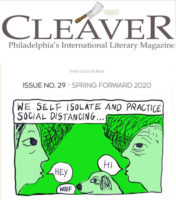
The newest issue of Cleaver features a visual narrative by Emily Steinberg; short stories by Catherine Parnell, Andrea Ellis-Perez, and others; flash by Uma Dwivedi, Kim Magowan, and more; and poetry by Marc Harshman, Jackie Craven, and more. Additional art by Serge Lecomte.
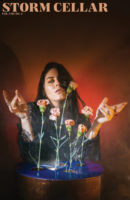 Storm Cellar, a journal of safety and danger since 2011, seeks amazing new writing and art for its summer issue. We especially encourage BIPOC, lgbtqia+, women and gender nonbinary, poor, neurodivergent, border-straddling, and other under-represented authors. Send secrets, treasures, evidence, and evocations: surprise us! Submission form at stormcellar.submittable.com.
Storm Cellar, a journal of safety and danger since 2011, seeks amazing new writing and art for its summer issue. We especially encourage BIPOC, lgbtqia+, women and gender nonbinary, poor, neurodivergent, border-straddling, and other under-represented authors. Send secrets, treasures, evidence, and evocations: surprise us! Submission form at stormcellar.submittable.com.
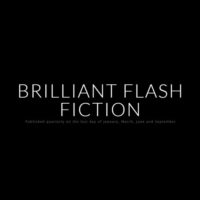
The March 2020 issue is here with new flash by Cody Pease, Sue Mell, Amy L. Clark, Kara Bernard, Nick LeGrand, Mandira Pattnaik, Quin Yen, and more. Find out more at the Brilliant Flash Fiction website.
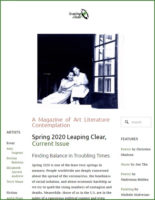 Leaping Clear offers readers poetry, prose, and so much more.
Leaping Clear offers readers poetry, prose, and so much more.
In the current, Spring 2020 issue, readers can find “Reflections,” by Jon Tho, a light and flowing song on the piano; “Letter to My Mum” by Zangmo Alexander, a video made in response to Alexander’s mother questioning Alexander’s choice to become ordained as a Buddhist nun; mixed media with fabric art by Barbara Parmet; and poetry and prose by writers like Terri Maue, Christien Gholson, Mobi Warren, Stephanie Peek, and others.
The variety found in this issue is refreshing and keeps readers engaged. Now is a great time to check it out as a bit of an escape from what’s going on in the world around us. With calming music, engaging video, and more than a handful of traditionally written pieces, Leaping Clear gives readers a moment to find balance in their lives.
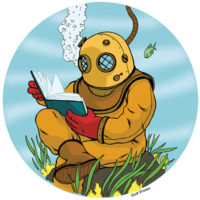 Deadline: June 30, 2020
Deadline: June 30, 2020
Our third annual first book prize is open and accepting manuscripts. If you have a smoking hot manuscript or know someone who does, please give us a shot. Awarded annually to a poet writing in English who has not yet published a full-length poetry book, the Marystina Santiestevan First Book Prize champions poets who dance to their own tune not to be different but to be true. Previously unpublished manuscripts of 48-90 pages should be submitted through our Submittable page or via the USPS. Please visit www.conduit.org/book-prizes for details.
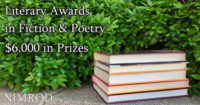 Extended Deadline: April 15, 2020
Extended Deadline: April 15, 2020
Submissions for The Pablo Neruda Prize for Poetry and The Katherine Anne Porter Prize for Fiction, with prizes of $2,000 and $1,000 and publication, have been EXTENDED to April 15th. Finalists and selected semi-finalists will be published and paid at a rate of $10/page. For poetry, submit 3-10 pages (one long poem or several short poems); for fiction, one story, 7,500 words maximum. Manuscripts may be mailed or submitted online: nimrodjournal.submittable.com/submit. Each entry must be accompanied by a $20 entry fee, which includes a one-year subscription. For more information and the complete rules, email [email protected] or visit nimrod.utulsa.edu.
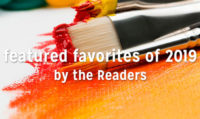 Looking for some good poetry to read during National Poetry Month? Visit Palette Poetry where Associate Editor Benjamin Bartu has put together a list of “Featured Favorites of 2019.” This list includes links to five different poems published on Palette throughout 2019, and he introduces each piece with a little insight on the editors’ feelings about them.
Looking for some good poetry to read during National Poetry Month? Visit Palette Poetry where Associate Editor Benjamin Bartu has put together a list of “Featured Favorites of 2019.” This list includes links to five different poems published on Palette throughout 2019, and he introduces each piece with a little insight on the editors’ feelings about them.
The list includes work by Márton Simon translated by Timea Balogh, Logan February, Julia C. Alter, Jaime Zuckerman, and Dorothy Chan. Visit the Palette website to learn more about each piece and then delve in and enjoy.
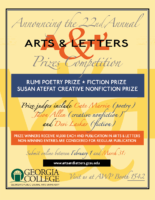 With all the craziness going on in the world, literary magazine Arts & Letters has extended the deadline to its Arts & Letters Prize. They are open to fiction, poetry, and creative nonfiction. $1,000 and publication awarded to a winner in each genre. The new submission deadline is April 15. $20 fee. Learn more…
With all the craziness going on in the world, literary magazine Arts & Letters has extended the deadline to its Arts & Letters Prize. They are open to fiction, poetry, and creative nonfiction. $1,000 and publication awarded to a winner in each genre. The new submission deadline is April 15. $20 fee. Learn more…
 April is here, ringing in National Poetry Month. To celebrate the occasion, Poetry Magazine is currently offering a free download of the April 2020.
April is here, ringing in National Poetry Month. To celebrate the occasion, Poetry Magazine is currently offering a free download of the April 2020.
You can find the free issue in the Poetry Magazine App, available through the Apple App Store, Google Play, and Amazon.
Poets in this issue include Ocean Vuong, Emily Jungmin Yoon, Jeannine Hall Gailey, Gertrude Stein and Bianca Stone, Michael Hoffman, and plenty more. Go snag your free copy and spend the month celebrating the poems and poets you love.
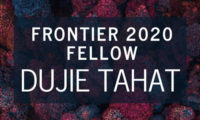 Frontier Poetry’s New Voices Fellowship is for uplifting and supporting “emerging poets from traditionally marginalized communities.” Congratulations to the newly announced Fellow for 2020: Dujie Tahat.
Frontier Poetry’s New Voices Fellowship is for uplifting and supporting “emerging poets from traditionally marginalized communities.” Congratulations to the newly announced Fellow for 2020: Dujie Tahat.
Tahat will receive a $500 grant, editorial guidance, the opportunity to read for Frontier, and publication of his work.
You can learn more about Tahat, listen to his podcast, and read recent work linked from the Frontier Poetry website.
Three poems by Laurinda Lind can be found in Issue 29 of High Desert Journal: “When I Lived in Soda Springs, Idaho & I Had a Belly at the Bar,” “When I Lived in Soda Springs, Idaho & the Cashier at the Convenience Store Was Friendly to Me,” and “When I Lived in Soda Springs, Idaho & I Had Not Yet Killed a Black Widow Spider.”
This series of prose poems is strong in its storytelling. They read quickly with sentences that run on as if the speaker can’t wait to get the words out. The speaker is not the only person in these pieces. They all include other people the speaker interacts with, a cast of characters that Lind brings to life for us: her neighbor “who later stole several hundred dollars from me & nearly killed my cat,” the “old guy” who “wanted to buy us beers,” the friendly cashier who was “short & pretty” with “huge green eyes” and later robbed the store she worked at, and the man who calls her and harasses her over the phone.
There’s an edge to the writing, a take-no-nonsense attitude in every piece. The speaker is a woman who is surviving against the odds in this strange, unfamiliar place with people and animals who make living there difficult. Lind fleshes out a speaker who readers can root for.
Reaching out takes many forms. We seek short fiction, poetry, plays, screenplays, and nonfiction for our upcoming Issue 6. You might be isolated but the world is at your keyboard—let’s connect. No, this isn’t a cheeky call like our previous ones. We don’t think that’s appropriate given the pandemic. But our enthusiasm and love of GOOD WRITING is unchanged and yes, we are still the crazy Dude Sextet. We want your junk and we want it now. See fleasonthedog.com for guidelines. Runs April 2-30.
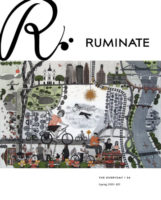 The latest issue of Ruminate features the writers who placed in the 2020 VanderMey Nonfiction Prize.
The latest issue of Ruminate features the writers who placed in the 2020 VanderMey Nonfiction Prize.
First Place
“Destiny of Cumin” by Jasmine V. Bailey
Second Place
“A True Prayer is One That You Do Not Understand” by Kelly J. Beard
Honorable Mention
“How To Ruin a Persian Wedding” by Atash Yaghmaian
Finalists include Avra Aron, Kaimana Farris, Dorothy Neagle, Alexandra Loeb, Sally Pearson, Arielle Schussler, Jamie Smith, Shannon Tsonis, and Shannon Yarbrough.
Selections were made by Ruminate’s founder, Brianna Van Dyke and says of her first-place selection: “Jasmine V. Bailey’s ‘Destiny of Cumin’ offers a wide-searching exploration of food and slavery and motherhood and becomes an essay about power and love and what it means to live among the contradictions of our own hearts.”
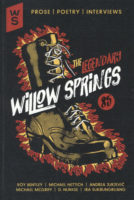 Magazine Review by Katy Haas
Magazine Review by Katy Haas
I’m a fan of reading and making blackout poetry, and the Spring 2020 issue of Willow Springs offers one piece of blackout by Jackson Burgess. What makes this a little more unique than other pieces of blackout I’ve read in the past is that Burgess blacks out his own poem.
On one page, readers can find a prose poem called “Medicine,” which details an almost nightmarish account of medical themes exploring a “lifetime trying to learn what another body needs.” On the next page, the prose poem is blacked out leaving only twelve words from the original piece. Dark and creative, I enjoyed the construction and deconstruction of Burgess’s work.